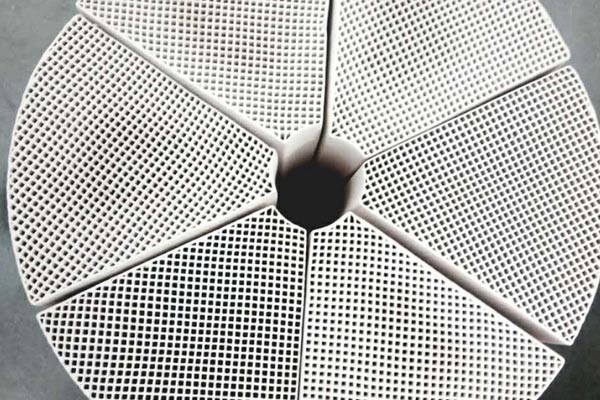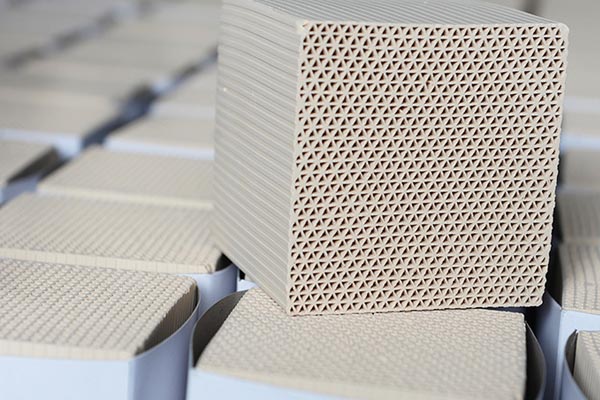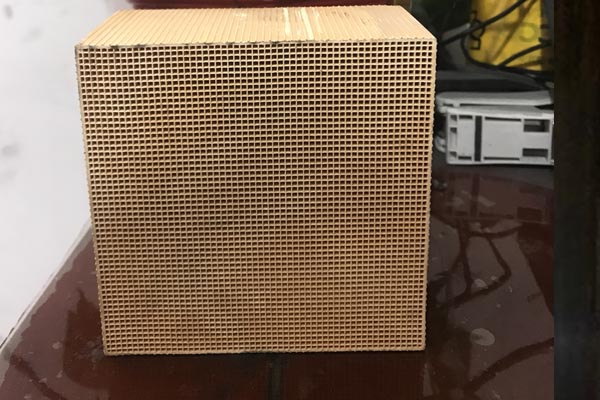High silica zeolite type molecular sieves, this kind of zeolite has a series, and ZSM-5 is widely used, with ZSM-8 and ZSM-11 having the same structure; The other group is ZSM-21, ZSM-35 and ZSM-38. ZSM-5 is often called high silica zeolite, with the Si/Al ratio up to 50 and ZSM-8 up to 100. This group of molecular sieves also shows hydrophobic characteristics. Honeycomb zeolite molecular sieve manufactor Their structural units are similar to those of mordenite, consisting of pairs of five membered rings, with no cage like cavities and only channels. ZSM-5 has two sets of cross channels, one is straight through, the other is zigzag perpendicular to each other, both formed by ten yuan rings. The channel is oval and its window diameter is (0.55-0.60) nm. Honeycomb zeolite molecular sieve major Zeolites belonging to the high silicon group also have silicalite-1 of all silicon type, which has the same structure as ZSM-5, and silicalite-2 is the same as ZSM-11.

Honeycomb zeolite molecular sieve manufactor Microporous molecular sieves with molecular pore size below 2 nm and mesoporous molecular sieves with molecular pore size between 2-50 nm (50 nm The above are macroporous molecular sieves), mesoporous molecular sieves have high specific surface area, regular and orderly pore structure, narrow pore size distribution, continuous and adjustable pore size and other characteristics, which make it play an important role in the adsorption, separation and catalytic reaction of macromolecules that are difficult for many microporous molecular sieves to complete. Therefore, molecular sieve materials with different properties and pore sizes shall be configured according to the different components of organic waste gas during selection, so as to achieve targeted organic waste gas treatment, meet the design requirements and emission standards. The main material of honeycomb zeolite adsorbent is natural zeolite. The manufacturer of zeolite is composed of silica Inorganic microporous material composed of al_2o_3 and alkaline metal or alkaline earth metal, with inner pore volume accounting for 40-50% of the total volume and specific surface area of 100-500 m2/g, is characterized by high temperature resistance, non flammability, good thermal stability and hydrothermal stability. It is an efficient molecular sieve carrier with good adsorption performance, no secondary pollution, and can be regenerated at high temperature. Compared with honeycomb activated carbon, its performance is about 25% of its efficiency, However, it is widely used in the fields of adsorption, separation, catalysis and environment due to its high temperature resistance and difficult ignition, Honeycomb zeolite molecular sieve major It is more suitable for the treatment of organic waste gas with large air volume and low concentration.

With the continuous deepening of research, honeycomb zeolite molecular sieve has gradually moved from laboratory to industrial practical application. Due to its powerful performance, it can be integrated with the reactor, Shanghai Honeycomb zeolite molecular sieve In membrane catalytic reaction, the reaction is coupled with separation. At present, the application fields of zeolite membrane are pervaporation, gas separation and membrane reactor. It is the needs of human practical activities and the development of application fields that constantly promote the development of zeolite molecular sieves. From natural zeolite to synthetic zeolite, from low silica zeolite to high silica zeolite; From silicoaluminium molecular sieve to aluminophosphate molecular sieve; From super micropore to mesoporous material; Honeycomb zeolite molecular sieve major The development from inorganic porous frameworks to MOFs, as well as the recent emergence of macroporous materials, has effectively improved the yield, reduced the synthesis cost and environmental pollution.

Honeycomb zeolite molecular sieve major In addition to physical adsorption, chemical reaction also often occurs on the surface of zeolite, which contains a small amount of chemical combination, oxygen and hydrogen in the form of functional groups. These surfaces contain oxides or complexes that can react with the adsorbed substances, so that they can combine with the adsorbed substances and aggregate to the interior and surface of zeolite. Honeycomb zeolite molecular sieve Shanghai The main material of honeycomb zeolite adsorbent is natural zeolite. The manufacturer of zeolite is composed of silica Inorganic microporous material composed of al_2o_3 and alkaline metal or alkaline earth metal, with inner pore volume accounting for 40-50% of the total volume and specific surface area of 100-500 m2/g, is characterized by high temperature resistance, non flammability, good thermal stability and hydrothermal stability. It is an efficient molecular sieve carrier with good adsorption performance, no secondary pollution, and can be regenerated at high temperature. Compared with honeycomb activated carbon, its performance is about 25% of its efficiency, However, it is widely used in the fields of adsorption, separation, catalysis and environment due to its high temperature resistance and difficult ignition. It is more suitable for the treatment of organic waste gas with large air volume and low concentration.



